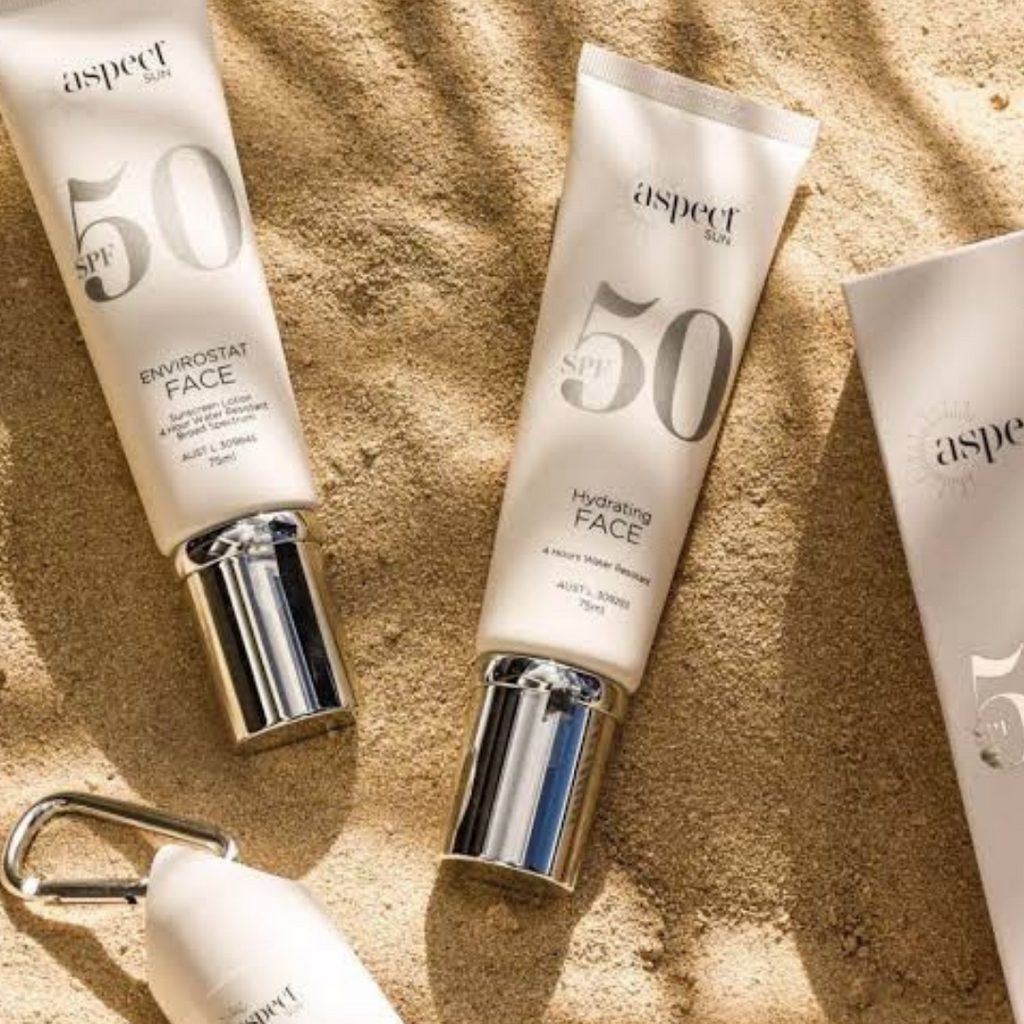SPF 101 – why sun protection should be the #1 skincare product on your shelf

SPF 101 – why sun protection should be the #1 skincare product on your shelf
You can enjoy every anti-ageing treatment under the sun but if you’re not applying SPF every day, then you’re really throwing your money down the drain. Harsh, but true!
Australia is sadly the skin cancer capital of the world thanks to our harsh, arid environment. According to the Cancer Council, each year, over 11,000 people are diagnosed with melanoma and over 400,000 people are treated for a non-melanoma skin cancer. We often talk about the premature ageing and sun hyperpigmentation effects but let’s not forget that a lack of regular SPF is a key contributor to attaining sun cancer, especially here in Australia.
So, we hear a lot about sunscreen, but many don’t know the ins and outs of why it’s so important and how to pick the right SPF product for your skin. That’s why today we’re answering some of your most frequently asked SPF questions.
What is SPF?
SPF stands for sun protection factor, the measurement of how well it protects the skin from burning.
SPF is formulated differently across the globe thanks to different standards.
You will see SPF products range from SPF 15+ to SPF 50+ on the product shelves. These numbers indicate the length of time it takes for untanned skin to redden with the sunscreen applied. In Australia, because of our incredibly harsh sun, our SPF standards are incredibly high which means if an SPF 50+ has made the cut here in Aus, it’s done something right!
Why do I see broad-spectrum written on sunscreens?
You will see broad-spectrum written on sunscreens that offer protection against both forms of sunlight, UVA and UVB rays.
The easiest way to remember what each UV ray does is to observe the last letter. The A in UVA is known as the “ageing” ray, contributing to premature ageing as they deeply penetrate the skin. The B in UVB is known as the “burning” ray, contributing to sunburn and skin cancers.
We believe it’s incredibly important to know the role of both UV rays when choosing your sunscreen as the damage occurs both superficially and much deeper beneath the skin’s surface.
What is the difference between a physical and chemical sunscreen?
Physical sunscreens, also often referred to as mineral or zinc sunscreens, are made from fine particles of minerals known as titanium dioxide and zinc oxide. These minerals sit on the skin’s surface, and both reflect and absorb UV radiation.
Chemical sunscreens, on the other hand, act like a sponge when protecting the skin. They contain active sun filters that penetrate the skin and absorb UV light and prevent sun damage.
The best sunscreen is the sunscreen that you wear everyday so whether you select a physical or chemical product, choose the one that works with your skin and lifestyle best.
How much SPF do I need to apply?
One of the biggest SPF hiccups we see is people not applying enough SPF each day. Without adequate coverage, you’re not maximising the SPF rating of your product.
The Cancer Council recommends one teaspoon of sunscreen per limb with your face, neck and ears counting as one limb. Any visible skin should be protected by sunscreen, including the likes of your hands which are often forgotten about!
Do I need to reapply during the day?
Absolutely. How often you reapply your sunscreen is dependent on the sunscreen you’re using and what you’re doing during your day. If you’re indoors, such as working by a window or traveling, you’ll want to reapply your sunscreen every 2 hours.
If you’re swimming or exercising, you’ll want to firstly, use a water-friendly sunscreen and secondly, reapply once you’ve finished your dip or workout.
If you’re a makeup wearer, the idea of reapplying SPF can seem tricky but if applied gently with a beauty blender, you can reapply without disrupting your makeup.
Do I need to wear SPF if I’m just working from home?
Yes, yes, yes! UV rays can still penetrate through glass so if you’re working next to a window or outside on your balcony, you still require sun protection. A general rule of thumb on when to wear sunscreen is every day that ends in Y.
There’s SPF in my foundation and moisturiser. Will that do?
Nope, no way! The SPF in your foundation and moisturiser is a bonus but it’s not going to give you the total adequate coverage you need during your day. If you reflect on our measurement of one teaspoon of SPF per limb, that’s a tonne of foundation you’d need to get optimal coverage, not to mention the importance of reapplying. Who has time for all that blending?!
Can you recommend me a SPF product?
Of course, we’d love to! We recommend the Aspect Envirostat SPF 50+ sunscreen which, like all our aesthetic skin care brands, is available for purchase via our online store. This broad-spectrum sunscreen not only feels like a luxurious moisturiser but offers the added benefits of Vitamin E and a protective blend of antioxidants.
